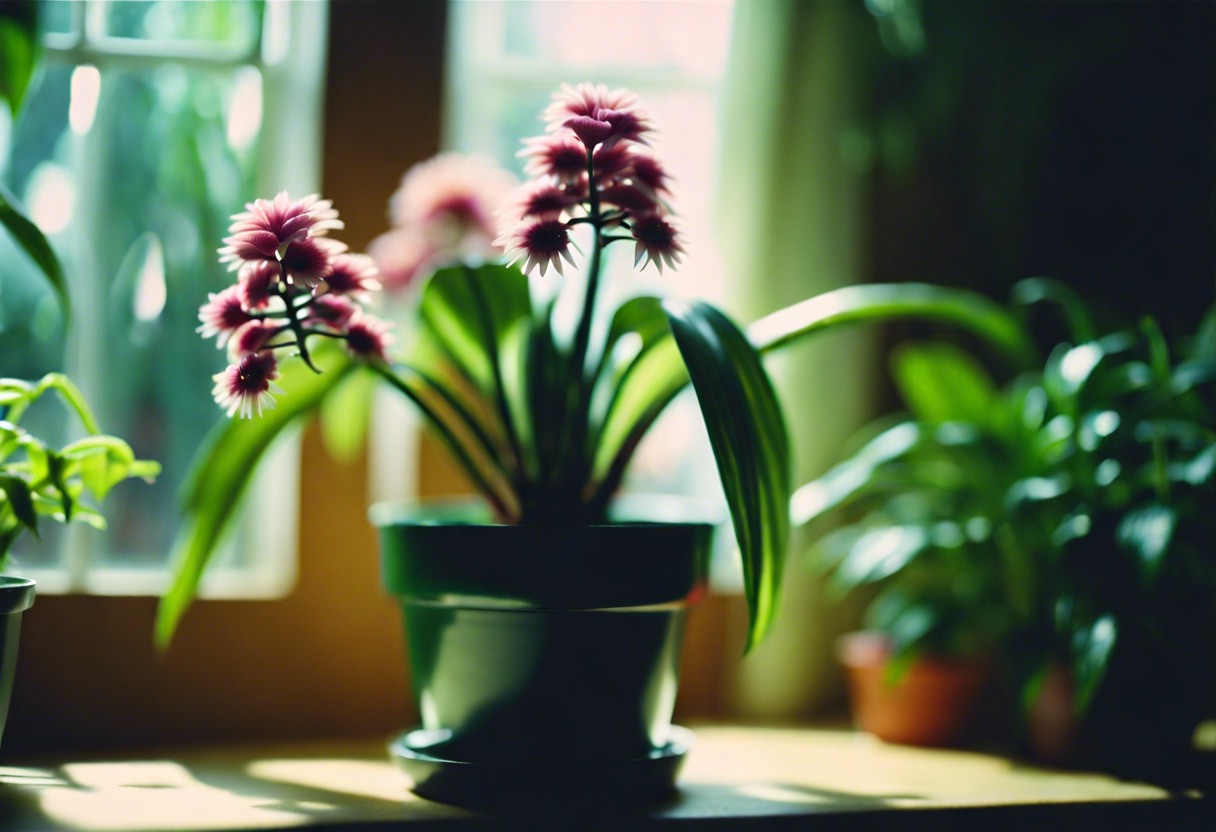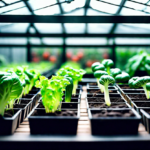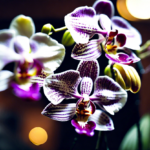Top 10 Easy Flowering Houseplants for Beginners
Adding a touch of natural beauty to our indoor spaces can greatly enhance our living environment. Easy flowering houseplants are a perfect choice for beginners who are looking to brighten up their homes with minimal effort. With their vibrant blossoms and low-maintenance requirements, these plants are a great way to introduce the joys of gardening indoors. Here are the top 10 easy flowering houseplants that are sure to bring color and life to any space:
- African Violet: Known for their attractive fuzzy leaves and dainty flowers, African violets thrive in bright, indirect light. They are relatively easy to care for and bloom throughout the year.
- Peace Lily: With its elegant white flowers and glossy, dark green leaves, the peace lily is a popular choice for indoor gardens. It prefers low to medium light and requires minimal watering.
- Bromeliad: Bromeliads are striking plants that come in a variety of colors and shapes. They thrive in bright, indirect light and require little water. Bromeliads are known for their long-lasting flowers that can bloom for months.
- Geranium: Geraniums are easy to grow and produce vibrant, eye-catching blooms. They prefer bright light and well-draining soil. Regular deadheading will promote continuous flowering.
- Kalanchoe: Kalanchoes are succulent plants that are loved for their long-lasting clusters of small, colorful flowers. They are drought-tolerant and prefer bright, indirect light.
- Pothos: Pothos is a trailing plant with heart-shaped leaves that comes in various shades of green. It thrives in low to medium light conditions and only needs occasional watering.
- Amaryllis: Amaryllis bulbs produce large, trumpet-shaped flowers in a range of vibrant colors. They require bright light and should be allowed to dry out between waterings.
- Christmas Cactus: The Christmas cactus is a popular holiday plant that blooms with colorful flowers during the winter months. It prefers bright, indirect light and requires a period of darkness to initiate blooming.
- Impatiens: Impatiens are shade-loving plants that are perfect for brightening up darker corners of your home. They produce an abundance of delicate flowers in various shades of pink, red, and white.
- Snake Plant: Also known as mother-in-law’s tongue, snake plants are known for their upright, architectural leaves. They thrive in low to medium light conditions and require minimal watering.
These easy flowering houseplants are not only beautiful but also provide numerous benefits such as improving air quality and reducing stress levels. With a little care and attention, beginners can enjoy the rewards of a thriving indoor garden. So why not incorporate one or more of these easy flowering houseplants into your home and experience the joy of nurturing nature indoors?
Choosing the Right Easy Flowering Houseplant for Your Home
When it comes to adding some vibrant color and natural beauty to your home, easy flowering houseplants are the perfect choice. These plants not only provide visual appeal but also require minimal care and maintenance, making them ideal for beginners or those with a busy lifestyle. However, with so many options available, it can be overwhelming to choose the right easy flowering houseplant for your home. Here are some factors to consider when selecting the perfect plant:
-
Light Requirements: One of the most crucial factors to consider is the lighting conditions in your home. Different flowering houseplants have varying light requirements. Some thrive in bright, indirect light, while others prefer low light conditions. Assess the lighting in the room where you plan to place the plant and choose a variety that can thrive in that specific environment.
-
Watering Needs: Another important consideration is the watering needs of the plant. While easy flowering houseplants generally require less water compared to other plants, it’s essential to understand the specific watering requirements of the plant you choose. Some plants prefer dry soil between watering, while others need consistently moist soil. Make sure to strike the right balance to keep your plant healthy and thriving.
-
Size and Growth Habit: Consider the size of the plant and its growth habit to ensure it fits well within your space. Some easy flowering houseplants grow bushy, while others grow tall and vine-like. Choose a plant that complements the aesthetic of your room and has enough space to grow and flourish.
-
Allergies and Pets: If you have allergies or pets in your home, it’s essential to choose a flowering houseplant that is non-toxic and doesn’t release excessive pollen. Certain plants like gerbera daisies, African violets, and peace lilies are known for being safe options for households with pets or allergy sufferers.
-
Maintenance Level: Consider the amount of time and effort you’re willing to invest in maintaining your easy flowering houseplant. Some plants require regular pruning, deadheading, or fertilizing, while others simply need occasional watering and indirect sunlight. Choose a plant that aligns with your maintenance capabilities and fits seamlessly into your routine.
By considering these factors, you can ensure that you choose the best easy flowering houseplant for your home. Whether you opt for the vibrant blooms of an orchid, the delicate petals of a begonia, or the lush foliage of a peace lily, these plants will brighten up your living space with minimal effort and maximum beauty. So go ahead and bring the natural grace and charm of flowering houseplants into your home today!
Essential Care Tips for Keeping Easy Flowering Houseplants Healthy
Easy flowering houseplants are a popular choice for homeowners who want to add a splash of color and beauty to their indoor spaces. These plants not only brighten up a room but also provide numerous health benefits. To ensure your easy flowering houseplants thrive and stay healthy, it’s important to follow a few essential care tips. By providing the right environment, watering, and maintenance, you can enjoy the beauty of these plants for a long time.
1. Find the Ideal Spot
When it comes to easy flowering houseplants, finding the ideal spot for them is crucial. Most of these plants do well in bright, indirect light. Place them near a window where they can receive filtered sunlight throughout the day. Avoid placing them in direct sunlight as it may scorch the leaves. Additionally, consider the humidity and airflow in the area; some flowering houseplants prefer more humid conditions, while others thrive in drier environments.
2. Water Properly
Proper watering is essential for the health of your easy flowering houseplants. Overwatering can lead to root rot and other fungal diseases, while underwatering can cause leaves to wilt and wither. The key is to provide the right amount of water based on the plant’s specific needs. As a general rule of thumb, wait until the top inch of soil feels dry before watering. Use room temperature water and ensure proper drainage by using pots with drainage holes.
3. Fertilize Regularly
Easy flowering houseplants benefit from regular fertilization. Choose a balanced fertilizer specifically formulated for flowering plants and follow the instructions on the packaging. Typically, it is recommended to fertilize once a month during the growing season, which is usually spring and summer. Avoid over-fertilizing as it can lead to nutrient burn and harm the plant’s overall health.
4. Maintain Proper Temperature
Temperature plays a crucial role in the health and growth of easy flowering houseplants. Most of these plants prefer temperatures between 60°F to 75°F (15°C to 24°C). Avoid exposing them to extreme temperature fluctuations, such as drafts from open windows or hot air blowing from heaters. Maintain a stable temperature within the recommended range to ensure optimal growth and flowering.
5. Prune and Clean
Regular pruning and cleaning are essential for the overall health and appearance of your easy flowering houseplants. Trim off any yellowing or dead leaves to promote new growth. Remove any debris or dust that may accumulate on the leaves, as it can hinder photosynthesis. This will also help prevent pests and diseases from infesting your plants.
By following these essential care tips, you can keep your easy flowering houseplants healthy and thriving. Remember to observe your plants closely and make any necessary adjustments based on their individual needs. With proper care and attention, your indoor space will be filled with vibrant, blooming houseplants that bring beauty and joy into your life.
Display and Showcase Easy Flowering Houseplants in Your Home
Having easy flowering houseplants can bring life and vibrancy to any home. Not only do they add beauty and color to your living spaces, but they also provide numerous health benefits. Whether you have a small apartment or a spacious house, there are creative ways to display and showcase your easy flowering houseplants that will enhance the aesthetic appeal of your home.
1. Use decorative plant stands: A decorative plant stand can elevate your easy flowering houseplants and create an eye-catching display. Choose stands with different heights and styles to add visual interest to your space. Place them near windows or in empty corners to maximize their impact.
2. Incorporate hanging planters: Hanging planters are a popular choice for showcasing easy flowering houseplants. They not only save floor space but also create a unique visual display. Hang them near windows, in stairwells, or even from the ceiling to create a stunning cascading effect.
3. Create a plant shelf: If you have limited floor space, consider creating a plant shelf. Install floating shelves or repurpose a bookshelf to display your easy flowering houseplants. Arrange them in a way that creates a lush and visually appealing display. You can mix and match different plant varieties to add texture and depth.
4. Group plants together: Create a lush and vibrant display by grouping your easy flowering houseplants together. Choose plants with different foliage colors, textures, and heights for added visual interest. You can place them on a side table, on the dining table centerpiece, or even on a windowsill.
5. Use decorative containers: Opt for decorative containers that complement your home’s aesthetic. Choose containers in different shapes, sizes, and materials like ceramic, terracotta, or woven baskets. These containers not only provide a stylish look but also enhance the overall visual appeal of your easy flowering houseplants.
6. Incorporate vertical gardens: If you’re looking for a unique and space-saving way to display your easy flowering houseplants, consider incorporating a vertical garden. Vertical gardens can be created using wall-mounted planters, ladder shelves, or even repurposed pallets. They make a bold statement and can transform any dull wall into a living masterpiece.
7. Consider a centerpiece arrangement: Add a touch of elegance to your dining table or coffee table by creating a centerpiece arrangement with your easy flowering houseplants. Choose plants with delicate blooms and place them in a decorative tray or shallow container. Add some pebbles, moss, or decorative stones to enhance the overall look.
Remember to consider the light and humidity requirements of your easy flowering houseplants when choosing the display locations. Some plants thrive in bright, indirect light, while others prefer low light conditions. With a little creativity and careful consideration, you can create a stunning display of easy flowering houseplants that will be the envy of all your visitors.
Top Easy Flowering Houseplants: Common Problems and How to Troubleshoot Them
Introduction
Easy flowering houseplants are a popular choice for many beginners in indoor gardening. These plants add beauty and color to any space, while also providing numerous benefits such as improved air quality and stress reduction. However, like any living organism, houseplants can encounter a range of common problems that may affect their growth and overall health. In this article, we will discuss some of the most common problems with easy flowering houseplants and provide effective troubleshooting tips to ensure your plants thrive.
1. Overwatering
Overwatering is one of the most common problems encountered by indoor gardeners. When easy flowering houseplants receive excessive water, their roots become saturated, leading to root rot and other complications. Signs of overwatering include yellowing leaves, wilting, and a foul odor. To troubleshoot this issue, the first step is to assess the moisture level of the soil. Stick your finger about an inch deep into the soil – if it feels moist, hold off on watering. Additionally, ensure proper drainage and adjust your watering schedule accordingly.
2. Underwatering
While overwatering is a common problem, underwatering can also have detrimental effects on easy flowering houseplants. When plants do not receive enough water, their leaves may become dry, wilted, and eventually die off. To troubleshoot this issue, check the moisture level of the soil regularly. If the soil feels dry, it’s time to water your plants. Remember to water thoroughly until the excess water drains out from the bottom of the pot, but avoid leaving your plants sitting in standing water.
3. Insufficient Light
Light is an essential factor in the growth and flowering of houseplants. Insufficient light can result in leggy growth, pale leaves, and a lack of blooms. Troubleshoot this problem by assessing the lighting conditions in your home. Identify the brightest spots and place your easy flowering houseplants near windows or under artificial grow lights. Alternatively, you can move your plants to areas with filtered light and avoid direct sunlight, as this may cause leaf burn.
4. Pest Infestations
Pest infestations, such as aphids, mealybugs, and spider mites, are common issues that can affect houseplants. These pests can cause damage to leaves, stems, and flowers, inhibiting the overall health and growth of your plants. To troubleshoot pest infestations, examine your plants regularly, paying close attention to the undersides of leaves and the soil surface. If you detect pests, treat them with natural or chemical insecticides, following the manufacturer’s instructions. Alternatively, you can manually remove the pests using a soft cloth or a cotton swab dipped in soapy water.
5. Nutrient Deficiencies
Easy flowering houseplants require essential nutrients to support healthy growth and flowering. Nutrient deficiencies can manifest through weak stems, yellowing leaves, and stunted growth. Troubleshoot this problem by providing balanced fertilizer specifically formulated for flowering houseplants. Follow the manufacturer’s recommendations regarding the frequency and dosage of application. Additionally, avoid overfertilizing, as it can lead to fertilizer burn and other complications.
By being aware of these common problems and their respective troubleshooting methods, you can ensure that your easy flowering houseplants thrive and flourish. Remember to monitor the moisture levels, provide adequate light, and address any pest issues promptly. With proper care and attention, your indoor garden can become a vibrant and beautiful sanctuary. Happy gardening!
Conclusion
Incorporating easy flowering houseplants into your home is a wonderful way to add natural beauty and a touch of color to your living space. With the top 10 options listed above, you have a wide variety to choose from, whether you prefer vibrant blooms or delicate flowers. Remember to consider factors such as lighting, temperature, and humidity levels when selecting the right houseplant for your home.
To keep your easy flowering houseplants healthy, it’s important to provide them with the right care. This includes watering them properly, checking for pests regularly, and providing adequate light and fertilizer. By following these essential care tips, you can ensure that your houseplants thrive and continue to produce beautiful flowers throughout the year.
Once you have chosen the perfect easy flowering houseplants for your home and have mastered their care, you can get creative with displaying and showcasing them. Consider using decorative pots or hanging baskets to add an extra touch of style to your plants. You can also create attractive arrangements by grouping different houseplants together or placing them in eye-catching locations, such as on shelves or windowsills.
Despite your best efforts, you may still encounter some common problems with your easy flowering houseplants. However, with the troubleshooting tips provided, you can overcome these issues and get your plants back to their full health. Whether you are dealing with yellowing leaves, wilting flowers, or pests, there are simple solutions available to restore your houseplants to their vibrant and blooming state.
Easy flowering houseplants are a great addition to any home, offering beauty, fragrance, and a sense of tranquility. By choosing the right plants, providing the necessary care, and displaying them creatively, you can enjoy the benefits of these plants year-round. With the troubleshooting knowledge and tips at your disposal, you can overcome any hurdles that may arise, ensuring that your easy flowering houseplants continue to thrive and brighten up your living space. So go ahead, embrace the beauty of nature by bringing in these easy flowering houseplants into your home, and enjoy the serenity they bring.


